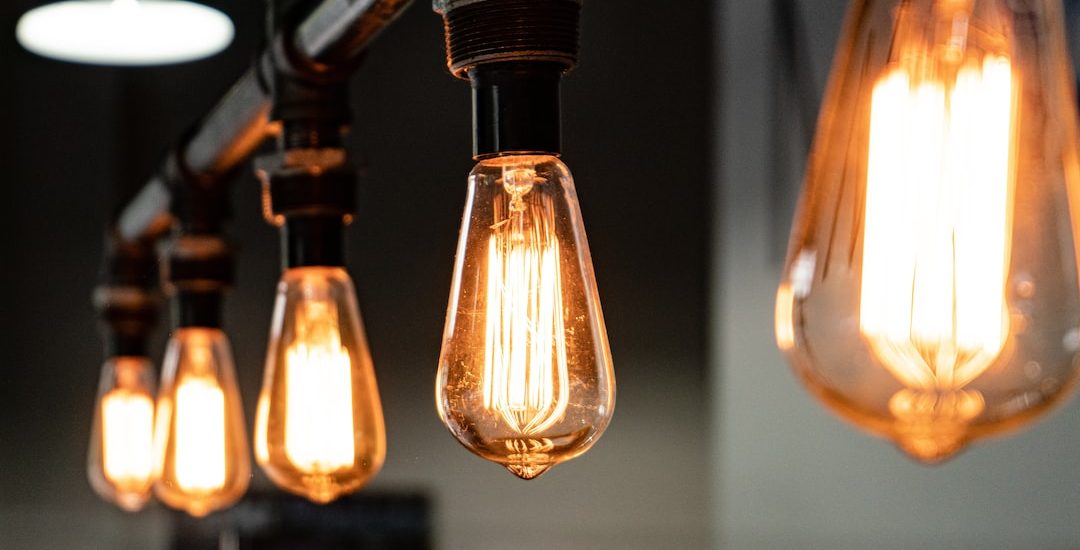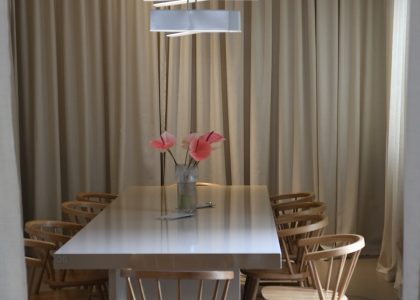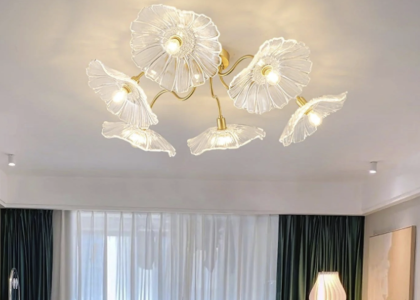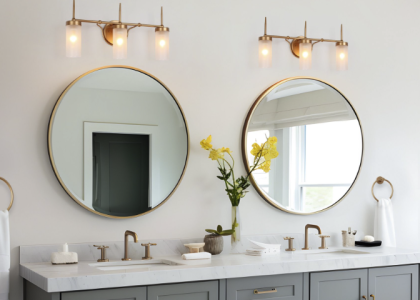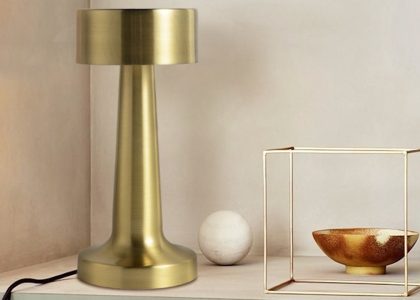Pendant lighting is a type of lighting fixture that hangs from the ceiling by a cord, chain, or rod. It is a versatile and stylish lighting solution that can be used in various spaces, from kitchens and dining rooms to bedrooms and living rooms. Pendant lights come in a wide range of styles, sizes, and finishes, making them suitable for any design aesthetic.
One of the main benefits of using pendant lighting is its ability to provide focused and direct lighting. Unlike other types of lighting fixtures that illuminate an entire room, pendant lights can be positioned to provide task lighting in specific areas. This makes them ideal for use over kitchen islands, dining tables, or reading nooks.
Pendant lighting is also a popular choice for homeowners and designers because of its ability to add visual interest and style to a space. With so many different styles and designs available, pendant lights can be used to enhance the overall aesthetic of a room. Whether you prefer a modern and sleek look or a vintage and rustic feel, there is a pendant light out there that will suit your taste.
Key Takeaways
- Pendant lighting is a versatile and stylish lighting solution for any space.
- Understanding the different components of a pendant light can help you choose the right one for your needs.
- When choosing a pendant light, consider factors such as size, style, and placement.
- Pendant lighting styles range from modern to vintage, and cluster pendant lights can create a statement piece.
- Pendant lighting can be used in any room and can even be considered a unique piece of art.
The Anatomy of a Pendant Light: Understanding the Different Components
To fully understand pendant lighting, it’s important to familiarize yourself with the different components that make up a pendant light. The main components include the canopy, the cord or chain, the socket, the shade or diffuser, and the bulb.
The canopy is the part of the pendant light that attaches to the ceiling and covers the electrical wiring. It is usually round or square in shape and comes in various finishes to match the style of the pendant light.
The cord or chain is what suspends the pendant light from the ceiling. It can be adjustable in length to accommodate different ceiling heights. The cord or chain also carries the electrical current from the ceiling to the socket.
The socket is where the light bulb is screwed in. It is typically made of metal and is available in different finishes to match the overall design of the pendant light. The socket also houses the electrical wiring that connects the bulb to the power source.
The shade or diffuser is the part of the pendant light that covers the bulb and diffuses the light. It can be made of various materials, such as glass, metal, or fabric, and comes in different shapes and sizes. The shade or diffuser not only affects the quality and direction of the light but also adds to the overall design of the pendant light.
The bulb is the final component of a pendant light. It is what produces the light and can be chosen based on the desired brightness and color temperature. Pendant lights can accommodate various types of bulbs, including incandescent, LED, and halogen.
Each component of a pendant light plays a crucial role in its overall design and functionality. The size, shape, and material of each component can greatly impact how the pendant light looks and performs in a space.
Choosing the Right Pendant Light for Your Space: Factors to Consider
When choosing a pendant light for your space, there are several factors to consider to ensure that you select the right one. These factors include the size and height of the pendant light, as well as the style and finish that will best complement your space.
Size is an important consideration when choosing a pendant light. You want to make sure that the size of the pendant light is proportionate to the size of the room or area where it will be installed. A pendant light that is too small may get lost in a large space, while a pendant light that is too large may overwhelm a small room.
In addition to size, you also need to consider the height at which you will hang your pendant light. The height at which you hang your pendant light can greatly affect its functionality and visual impact. For example, if you are installing a pendant light over a kitchen island or dining table, you want to make sure that it is hung at a height that provides adequate task lighting without obstructing the view.
When it comes to style and finish, you want to choose a pendant light that complements the overall design aesthetic of your space. If you have a modern and minimalist space, you may opt for a pendant light with clean lines and a sleek finish. On the other hand, if you have a vintage or rustic space, you may choose a pendant light with a more ornate design and a distressed finish.
It’s also important to consider the function of the pendant light. Are you looking for task lighting or ambient lighting? Do you want the pendant light to be the focal point of the room or blend in with the existing decor? Answering these questions will help guide you in selecting the right style and finish for your pendant light. Huuly
Pendant Lighting Styles: From Modern to Vintage and Everything in Between
| Style | Description | Price Range | Popular Materials |
|---|---|---|---|
| Modern | Sleek and minimalistic designs with clean lines and geometric shapes. | 50-500 | Metal, Glass, Plastic |
| Industrial | Raw and edgy designs inspired by factories and warehouses. | 75-700 | Metal, Concrete, Glass |
| Vintage | Old-fashioned designs that evoke nostalgia and charm. | 100-1000 | Brass, Copper, Glass |
| Rustic | Natural and earthy designs that incorporate wood and other organic materials. | 50-500 | Wood, Metal, Glass |
| Transitional | Blends traditional and modern elements for a timeless look. | 75-800 | Metal, Glass, Fabric |
Pendant lighting comes in a wide range of styles, making it easy to find one that suits your personal taste and design aesthetic. Some popular pendant lighting styles include modern, vintage, and transitional.
Modern pendant lights are characterized by their clean lines, minimalistic design, and sleek finishes. They often feature geometric shapes and materials such as glass, metal, or plastic. Modern pendant lights are perfect for contemporary spaces and can add a touch of sophistication and elegance.
Vintage pendant lights, on the other hand, are inspired by designs from the past. They often feature ornate details, distressed finishes, and materials such as brass or bronze. Vintage pendant lights can add a sense of nostalgia and charm to any space.
Transitional pendant lights combine elements of both modern and vintage styles. They often feature clean lines with subtle details and finishes that are neither too sleek nor too distressed. Transitional pendant lights are versatile and can work well in various design aesthetics.
When incorporating different styles of pendant lighting into your space, it’s important to consider the overall design aesthetic and the existing decor. You want to choose pendant lights that complement the other elements in the room and create a cohesive look.
The Beauty of Cluster Pendant Lights: Creating a Statement Piece
Cluster pendant lights are a unique and eye-catching way to add drama and visual interest to a space. Instead of a single pendant light, cluster pendant lights consist of multiple lights grouped together in a cluster formation.
Cluster pendant lights can be arranged in various configurations, such as in a linear or circular pattern. They can also feature lights of different sizes, shapes, and finishes. This allows for endless possibilities when it comes to creating a statement piece.
One way to create a statement piece with cluster pendant lights is by using them as a focal point in a room. For example, you can hang a cluster of pendant lights over a dining table or kitchen island to draw attention to that area. The cluster of lights will not only provide ample task lighting but also serve as a visual centerpiece.
Another way to create a statement piece with cluster pendant lights is by using them in an unexpected way. For example, you can hang a cluster of pendant lights in a corner of a room or in an empty space on the wall. This will add an element of surprise and create a unique and artistic look.
When incorporating cluster pendant lights into your space, it’s important to consider the scale and proportion. You want to make sure that the size and number of lights in the cluster are appropriate for the size of the room and the height at which they will be hung.
Pendant Lighting for Different Rooms: Ideas and Inspiration

Pendant lighting can be used in various rooms throughout your home to provide both functional and decorative lighting. Here are some ideas and inspiration for using pendant lighting in different rooms:
– Kitchen: Pendant lights are commonly used over kitchen islands or breakfast bars to provide task lighting. They can also be used over the sink or stove to provide additional lighting in those areas. When choosing pendant lights for the kitchen, consider the size and height of the island or bar, as well as the overall design aesthetic of the space.
– Dining Room: Pendant lights are a popular choice for dining rooms because they can create a focal point and set the mood for meals. Hang a single pendant light or a cluster of lights over the dining table to provide both ambient and task lighting. Consider the size and shape of the dining table, as well as the height at which the pendant lights will be hung.
– Living Room: Pendant lights can be used in living rooms to add a touch of elegance and style. Hang a pendant light in a corner of the room to create a cozy reading nook or use pendant lights to highlight artwork or architectural features. Consider the overall design aesthetic of the living room and choose pendant lights that complement the existing decor.
– Bedroom: Pendant lights can be used in bedrooms to free up space on bedside tables and provide focused lighting for reading. Hang pendant lights on either side of the bed or above nightstands to create a symmetrical and balanced look. Consider the height at which the pendant lights will be hung to ensure that they provide adequate task lighting without obstructing the view.
– Bathroom: Pendant lights can be used in bathrooms to add a touch of luxury and sophistication. Hang pendant lights on either side of a vanity mirror to provide even and flattering lighting for grooming tasks. Consider the size and height of the vanity mirror, as well as the overall design aesthetic of the bathroom.
When choosing pendant lights for different rooms, it’s important to consider both form and function. You want to choose pendant lights that not only enhance the overall design aesthetic but also provide adequate lighting for specific tasks.
Pendant Lighting as Art: Unique and Creative Designs
Pendant lighting is not just a functional lighting solution; it can also be a work of art. There are many unique and creative pendant lighting designs available that can serve as both a light source and a statement piece.
One way to incorporate artistic pendant lighting into your space is by choosing pendant lights with unique shapes or materials. For example, you can opt for pendant lights that resemble sculptures or works of art. These pendant lights can add a touch of creativity and whimsy to any room.
Another way to incorporate artistic pendant lighting is by choosing pendant lights with intricate details or patterns. For example, you can choose pendant lights with laser-cut designs or hand-painted motifs. These pendant lights can add a sense of craftsmanship and beauty to any space.
You can also use pendant lights as a canvas for artistic expression. Many designers and artists create custom pendant lights that feature their own artwork or designs. These pendant lights can be truly one-of-a-kind and can serve as a conversation piece in any room.
When incorporating artistic pendant lighting into your space, it’s important to consider the overall design aesthetic and the existing decor. You want to choose pendant lights that complement the other elements in the room and create a cohesive look.
Pendant Lighting and Sustainability: Eco-Friendly Options
In today’s environmentally conscious world, many homeowners are looking for eco-friendly lighting options. Pendant lighting offers several sustainable options that are both stylish and energy-efficient.
One eco-friendly option for pendant lighting is LED bulbs. LED bulbs are known for their energy efficiency and long lifespan. They consume less energy than traditional incandescent bulbs and produce less heat, making them an ideal choice for pendant lighting.
Another eco-friendly option for pendant lighting is using recycled or sustainable materials. Many pendant lights are made from recycled glass, metal, or plastic. These materials not only reduce waste but also add a unique and eco-friendly touch to the overall design.
You can also choose pendant lights that are designed with energy-saving features, such as dimmable bulbs or motion sensors. These features allow you to adjust the brightness of the pendant lights based on your needs and save energy in the process.
When choosing sustainable pendant lighting, it’s important to look for certifications or labels that indicate the product’s eco-friendly qualities. Look for labels such as Energy Star, UL Environment, or Green Seal. These labels ensure that the pendant lighting meets certain environmental standards.
Maintenance and Care for Pendant Lighting: Keeping Your Lights Looking Like New
To keep your pendant lighting looking like new and functioning properly, it’s important to clean and maintain them regularly. Here are some tips for cleaning and maintaining your pendant lighting:
– Dust regularly: Use a soft cloth or feather duster to remove dust from the surface of the pendant light. This will help prevent dust buildup and keep the light shining brightly.
– Clean gently: If your pendant light has a glass shade or diffuser, you can clean it with a mild glass cleaner and a soft cloth. Avoid using abrasive cleaners or scrub brushes, as they can scratch the surface of the glass.
– Check the wiring: Periodically check the wiring of your pendant light to ensure that it is in good condition. Look for any frayed wires or loose connections and have them repaired or replaced if necessary.
– Replace bulbs as needed: If a bulb in your pendant light burns out, replace it with a new one of the same wattage and type. Be sure to turn off the power to the pendant light before replacing the bulb.
– Avoid excessive heat: If your pendant light uses incandescent bulbs, be mindful of the heat they produce. Avoid touching the bulb when it is on or placing flammable objects near the pendant light.
By following these maintenance tips, you can keep your pendant lighting looking like new and functioning properly for years to come.
The Timeless Elegance of Pendant Lighting
In conclusion, pendant lighting is a versatile and stylish lighting solution that can enhance the overall design aesthetic of any space. Whether you prefer a modern and sleek look or a vintage and rustic feel, there is a pendant light out there that will suit your taste.
The different components of a pendant light, such as the canopy, cord or chain, socket, shade or diffuser, and bulb, all play a crucial role in its overall design and functionality. Understanding these components can help you choose the right pendant light for your space.
When choosing a pendant light, it’s important to consider factors such as size, height, style, and finish. You want to choose a pendant light that complements the overall design aesthetic of your space and provides adequate lighting for specific tasks.
Pendant lighting can be used in various rooms throughout your home to provide both functional and decorative lighting. From kitchens and dining rooms to bedrooms and living rooms, pendant lighting can add a touch of elegance and style to any space.
Pendant lighting is not just a functional lighting solution; it can also be a work of art. There are many unique and creative pendant lighting designs available that can serve as both a light source and a statement piece.
In today’s environmentally conscious world, many homeowners are looking for eco-friendly lighting options. Pendant lighting offers several sustainable options that are both stylish and energy-efficient.
To keep your pendant lighting looking like new and functioning properly, it’s important to clean and maintain them regularly. By following some simple maintenance tips, you can ensure that your pendant lighting stays in top condition for years to come. Firstly, dusting the pendant regularly with a soft cloth or feather duster will help prevent the accumulation of dirt and grime. Additionally, wiping down the pendant with a mild soap and water solution can remove any stubborn stains or residue. Be sure to dry the pendant thoroughly to prevent water spots. It is also important to check the wiring and connections periodically to ensure they are secure and functioning properly. If you notice any loose wires or flickering lights, it is best to consult a professional electrician for repairs. Lastly, avoid using harsh chemicals or abrasive cleaners on your pendant lighting as they can damage the finish or delicate materials. By taking these simple steps, you can maintain the beauty and functionality of your pendant lighting for years to come.

